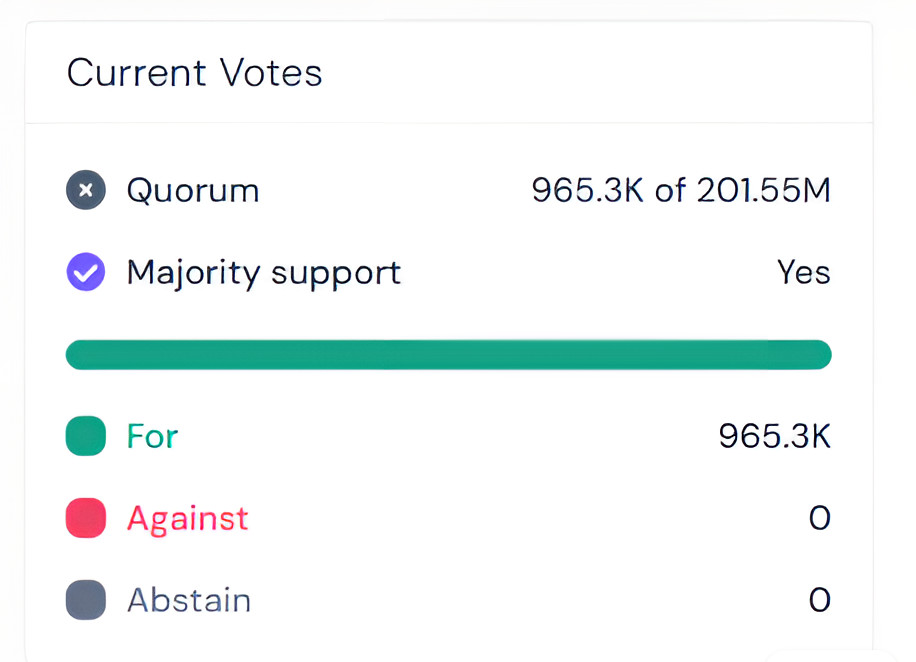Arbitrum’s Bold Move: The BoLD Protocol Set to Revolutionize Layer-2 Scaling

A New Era for Arbitrum
Arbitrum, Ethereum’s largest layer-2 scaling powerhouse, is stepping up its game with a groundbreaking innovation—the Bounded Optimistic Liveness Dispute (BoLD) protocol. The goal? To supercharge transaction finality and ensure dispute resolution happens swiftly and efficiently.
The proposal, first introduced on January 6, has already gained overwhelming support from the Arbitrum decentralized autonomous organization (DAO). With the final vote closing on January 24, all signs indicate a major shake-up in how transactions are validated within the ecosystem.
 DAO, Arbitrum
DAO, Arbitrum
BoLD protocol vote sees unanimous 965,000 support in Arbitrum DAO. Source: Arbitrum DAO
Understanding the BoLD Protocol
BoLD is all about enhancing decentralization and efficiency. Currently, Arbitrum relies on an exclusive set of validators to prevent malicious activities and keep the network in check. However, this limited setup poses risks, particularly in terms of potential transaction delays.
BoLD eliminates the need for a permissioned validator set, opening the doors for a more inclusive and streamlined validation process. Additionally, it introduces a hard time limit on resolving disputes—ensuring no single entity can stall transactions indefinitely.
According to the proposal, “BoLD mitigates the risks of delay attacks using a different mechanism—by enforcing a fixed upper time bound on dispute resolution.” If approved, disputes will have a strict 12.8-day window for resolution, increasing transparency and network reliability.
The BoLD protocol has already been live on the Arbitrum testnet since April 2024, giving developers ample time to analyze its effectiveness before a full deployment.
Key Features of the BoLD Protocol
BoLD isn’t just another upgrade—it’s built to tackle existing weak points head-on. Here’s what makes it a game-changer:
1. Censorship Timeout Mechanism
One of BoLD’s standout features is its ability to counteract sequencer censorship and network outages. Sequencers manage the order and processing of Arbitrum transactions. But if a sequencer is compromised or ceases operation, users can experience frustrating delays.
A real-world example? On December 15, 2023, Arbitrum One suffered a 78-minute outage due to a stalled sequencer during a spike in network traffic. The BoLD protocol’s censorship timeout feature exists to prevent such issues, ensuring transactions continue to flow smoothly, even under pressure.
2. Permissionless Validation for Arbitrum One
The protocol will remove permissioned validation in Arbitrum One, making the network more open and resistant to centralization risks. This shift is expected to enhance trust and transparency across the ecosystem.
3. Maintaining Security for Arbitrum Nova
While Arbitrum One goes fully permissionless, Arbitrum Nova—designed for high-throughput applications—will retain some permissioned validators due to its smaller Total Value Locked (TVL) of $43 million.
To strengthen Nova’s network security, the proposal includes the addition of Infura to the validator whitelist. Infura, a well-known blockchain infrastructure provider, will increase the number of active validators, making Nova more secure, stable, and resilient.
What’s Next for Arbitrum?
With overwhelming community support, the BoLD protocol is poised for mainnet deployment on February 12.
This upgrade represents a major milestone for Arbitrum and Ethereum’s layer-2 ecosystem, addressing long-standing concerns around transaction delays, network reliability, and validator centralization.
Final Thoughts
BoLD is more than just a technical refinement—it’s a revolutionary step toward a more efficient, decentralized blockchain future. By ensuring quick and fair dispute resolution and minimizing reliance on select validators, Arbitrum is setting a new standard for layer-2 solutions.
If Ethereum and layer-2 networks are to scale sustainably, innovative solutions like BoLD will play a crucial role. So, keep an eye on February 12—Arbitrum’s bold step forward could reshape the landscape of Ethereum scaling for years to come.
Related: DeFi TVL nears 2021 highs on liquid restaking, Bitcoin L2s

